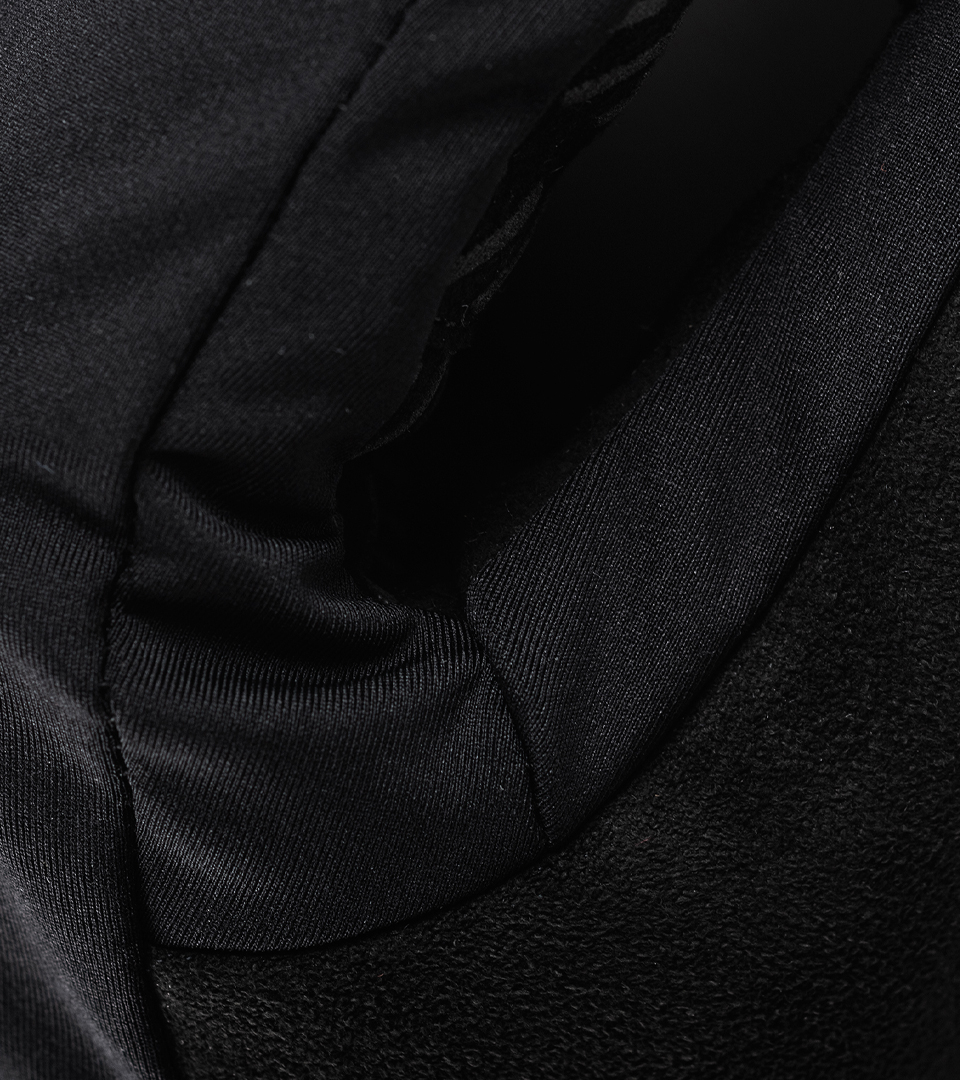Materials Guide
Sustainable fiber from raw eucalyptus wood, insulation designed for special units or revolutionary interior moisture-wicking technology. Each material used has a clear purpose and is complemented by functional properties. Read about the innovative materials and creative processes used to create the new AW'23 collection.
Compact wind protection
Windproof jackets and vests from the Debut collection fitting perfectly in the rider’s position on the bike are the new items of the season. “If we make a garment that fits perfectly on an upright figure, the shoulders will pull the garment upwards when leaning forward with outstretched arms. In this position the garment is narrow in the back area. Conversely, there is too much material in the chest part, causing it to sag. When riding, air gets trapped in the garment and circulates through it, which is uncomfortable in terms of aerodynamics and thermal comfort for the rider. For this reason, we have developed a cut that is adapted to the rider’s position on the bike. When trying on the garment, it is therefore necessary to simulate the riding position,” says Marcela Čanakyová from the product department when describing the creative process.
Wind resistance is due to the high weaving density of the fabric. Unlike membrane materials, it is breathable and wicks away internal moisture well. “Membrane materials are excellent for protection from the elements, but limit breathability. This causes the rider to sweat under the garment due to reduced evaporation of body moisture. Therefore, if there is no risk of precipitation but we want to protect ourselves from the wind, it is preferable to use a garment made of a high-density weaving material,” says Marcela. Effective protection from the rigors of the wind is complete with a durable water-repellent treatment (known as DWR) on the outside, enhancing the elastic material’s ability to repel water and dirt.
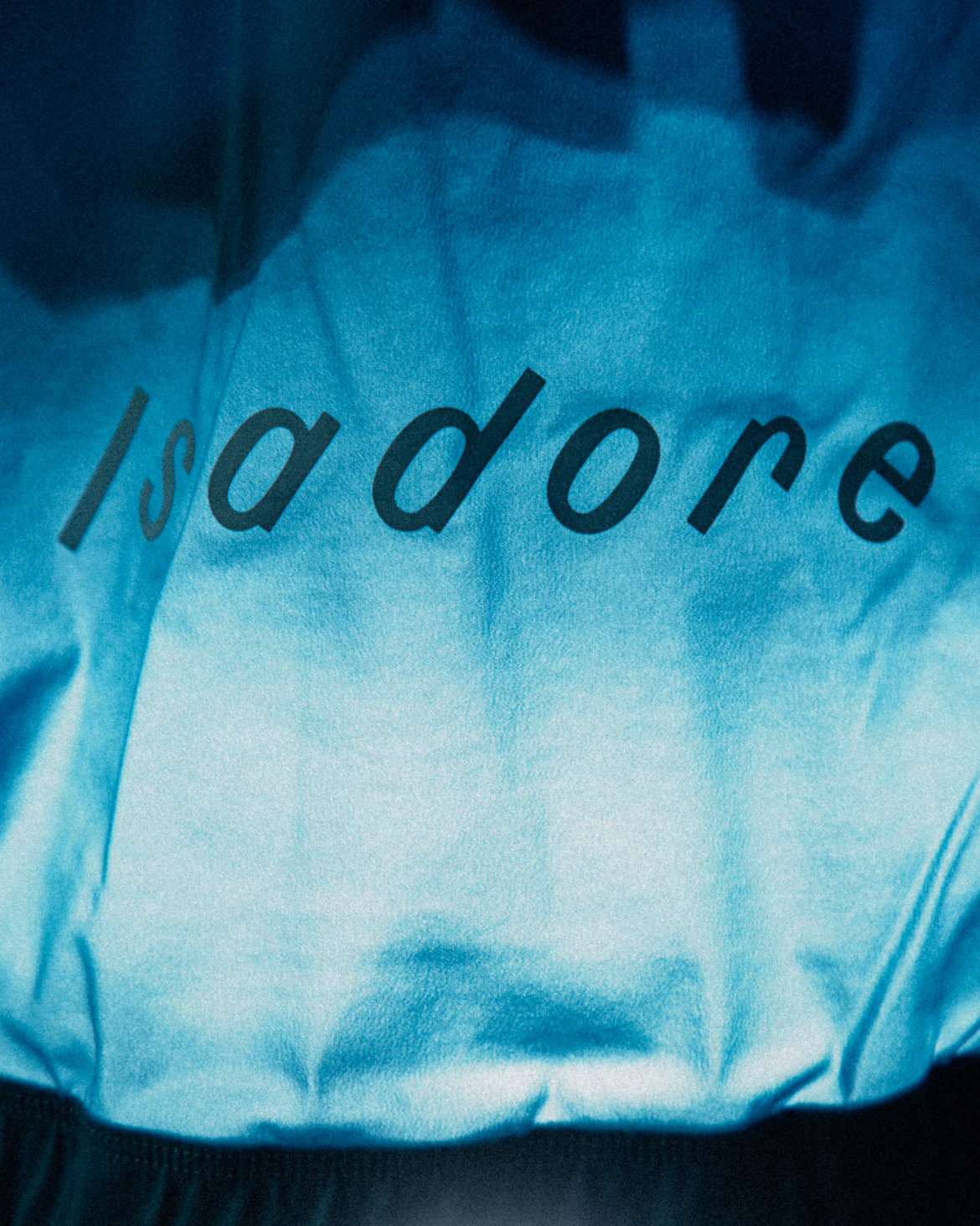
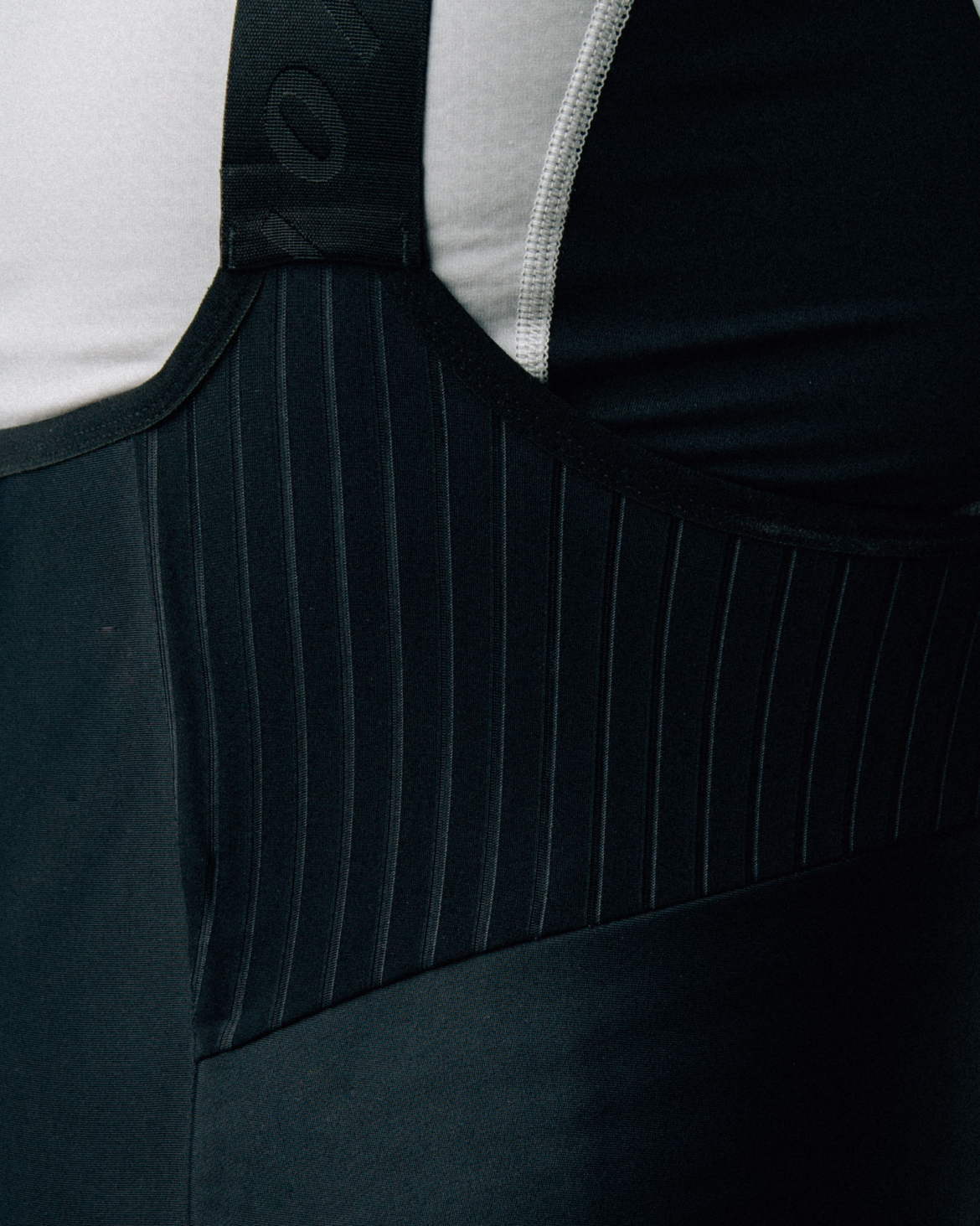
Pants for comfort even in sub-zero temperatures
Signature Deep Winter tights made from softshell material for the coldest conditions, which can withstand even freezing temperatures. The three-layer membrane material provides elasticity in four directions and effective water protection with a water column of up to 20,000 mm. The outer layer of polyamide fibers has a higher abrasion resistance and the ability of the fabric to repel water and dirt. “The uniqueness of these pants lies in their resistance to sub-zero temperatures and protection from the elements thanks to taped seams,” Marcela describes the product intent. With silicone tape on the ankles and taped seams, we have achieved maximum insulation properties complete with the wind resistance characteristic of membrane softshell. It stands out for its remarkable softness compared to other softshells used in the creation of functional clothing.
Merino wool jersey with added membrane
The finest merino wool with a thickness nearly six times lower than human hair. Soft to the touch and as comfortable as silk, it provides exceptional thermoregulating properties, odor control and stays warm even when the jersey is sweaty. Merino wool fibers are hollow, creating a kind of microclimate that prevents rapid penetration of external influences to the skin. In cold conditions, merino fibers provide warmth, while in warm conditions they have a cooling effect. In case of rapid temperature changes, they can dynamically adapt to the current conditions and regulate your body temperature. Moreover, merino fibers are hydrophobic, so they effectively evaporate sweat to the outside environment. If this process is stopped, for example, by a membrane layer, they begin to behave hydrophilically, drawing moisture into the interior of the fiber and absorbing excess moisture.
Merino wool fibers can absorb moisture up to 35% of their weight without you noticing it during riding. Even though they are soaked in moisture, they remain dry to the touch and as the only textile material they stay warm even when sweating. Compared to regular wool, merino is more stain-resistant, and with proper care, it can last for years. The Signature Wind Block jersey also features an added membrane on the chest, shoulders and sleeves to double up the material and prevent wind penetration. Precise protection for cold descents even in windy conditions.
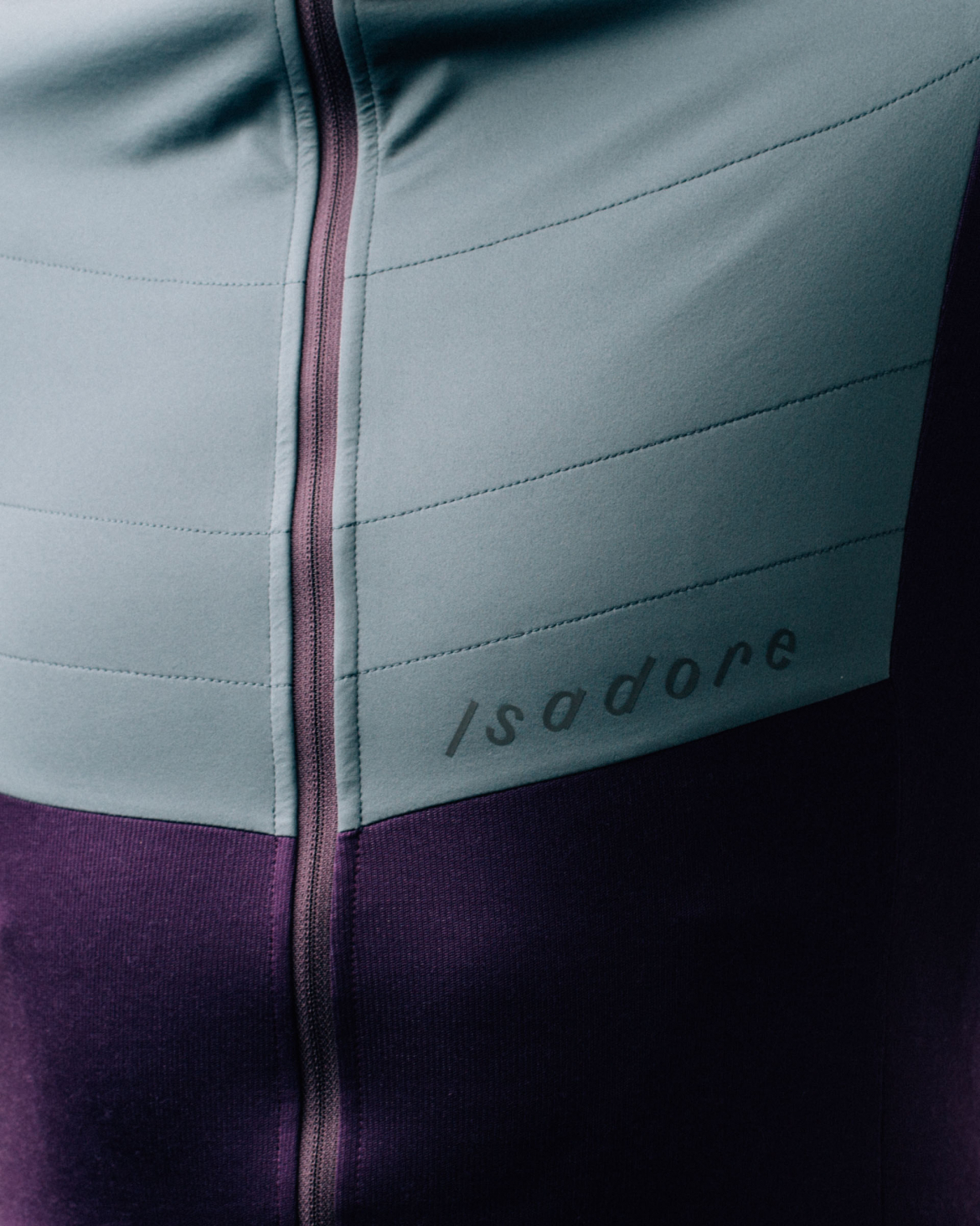
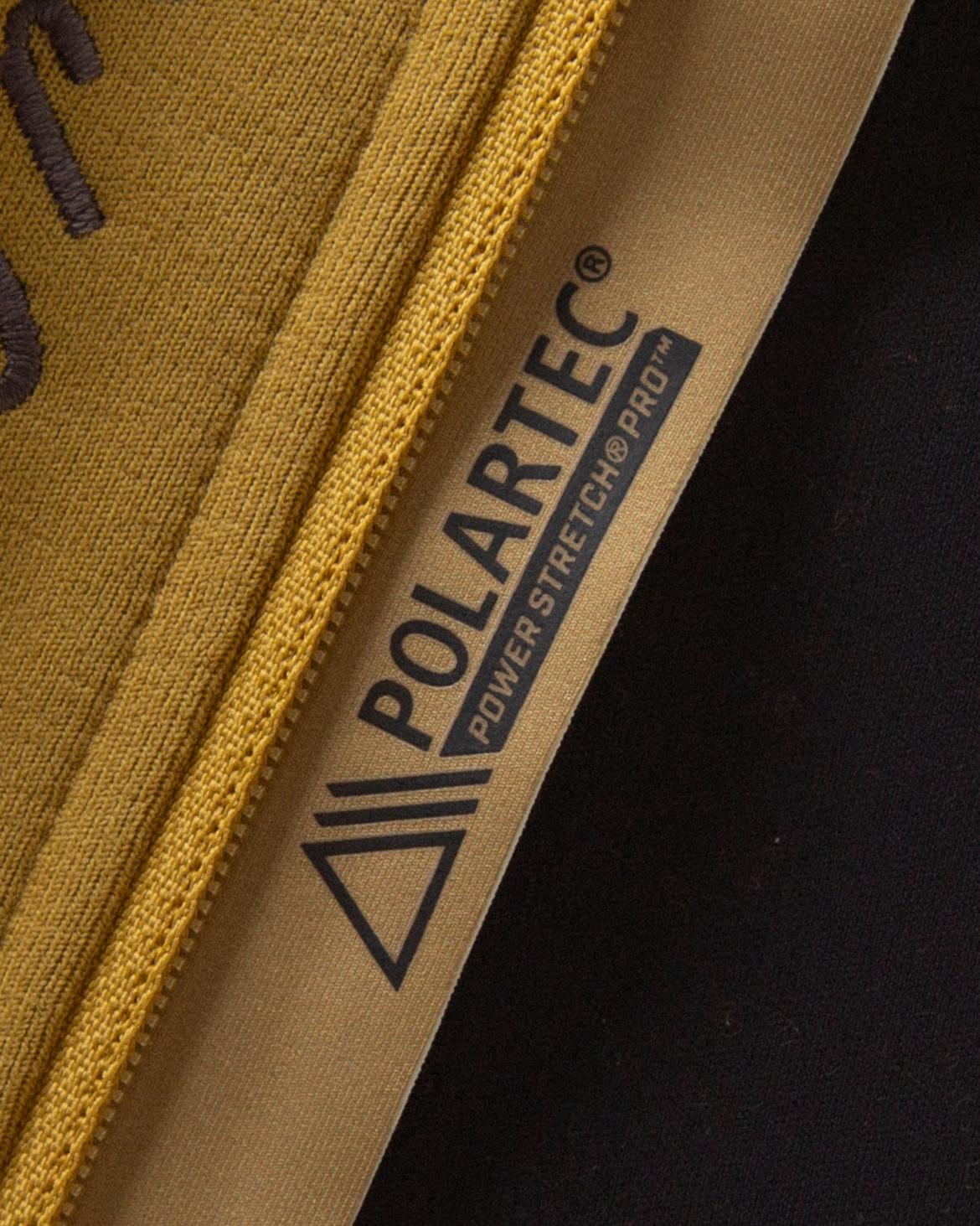
Our first Polartec® Power Stretch® Pro™ jersey
The Signature Deep Winter is the first piece in our portfolio made from the revolutionary material Polartec® Power Stretch® Pro™, one of the best in the category of functional thermal insulation layers. “It provides excellent elasticity, high density and softness of brushing on the reverse side with low material weight. In addition, the top layer contains polyamide fibers, which makes it more resistant to abrasion,” Marcela describes. Polyamide fibers are synthetic fibers with a smooth surface. This means that dirt doesn’t stick to their surface and the jersey therefore requires low maintenance. Compared to polyester, which has similar properties, they are also more resistant to mechanical damage. The highly insulated jersey will keep you warm even in cold and wet conditions and provides excellent stretch properties with the ability for the fabric to return to its original state, so it retains its shape even after hard days in the saddle and repeated washings.
Resistance and protection from the elements
The Signature Collection winter hardshell jacket with four-way stretch is made from breathable Pertex® Shield with a 3L triple-layer membrane having a water column of 20,000 mm and fully taped seams. “Pertex Shield 3L consists of three types of materials laminated together, with a polyurethane membrane in the middle. The materials on the outside are known for being tightly woven, so they provide high strength at low weight, wind resistance and long life. Pertex Shield can also be double-layered. But then you need to use a lining. However, this alternative is not nearly as effective as the 3L version. The material is still very lightweight, foldable, but the membrane is sufficiently protected from wear and tear or too much dirt.” This creates a layer durable enough for intense sporting activities, where breathability and protection from the unbridled elements of nature are crucial. To keep your membrane jacket in good condition and to maintain its water resistance, don’t forget to take good care of it as well.
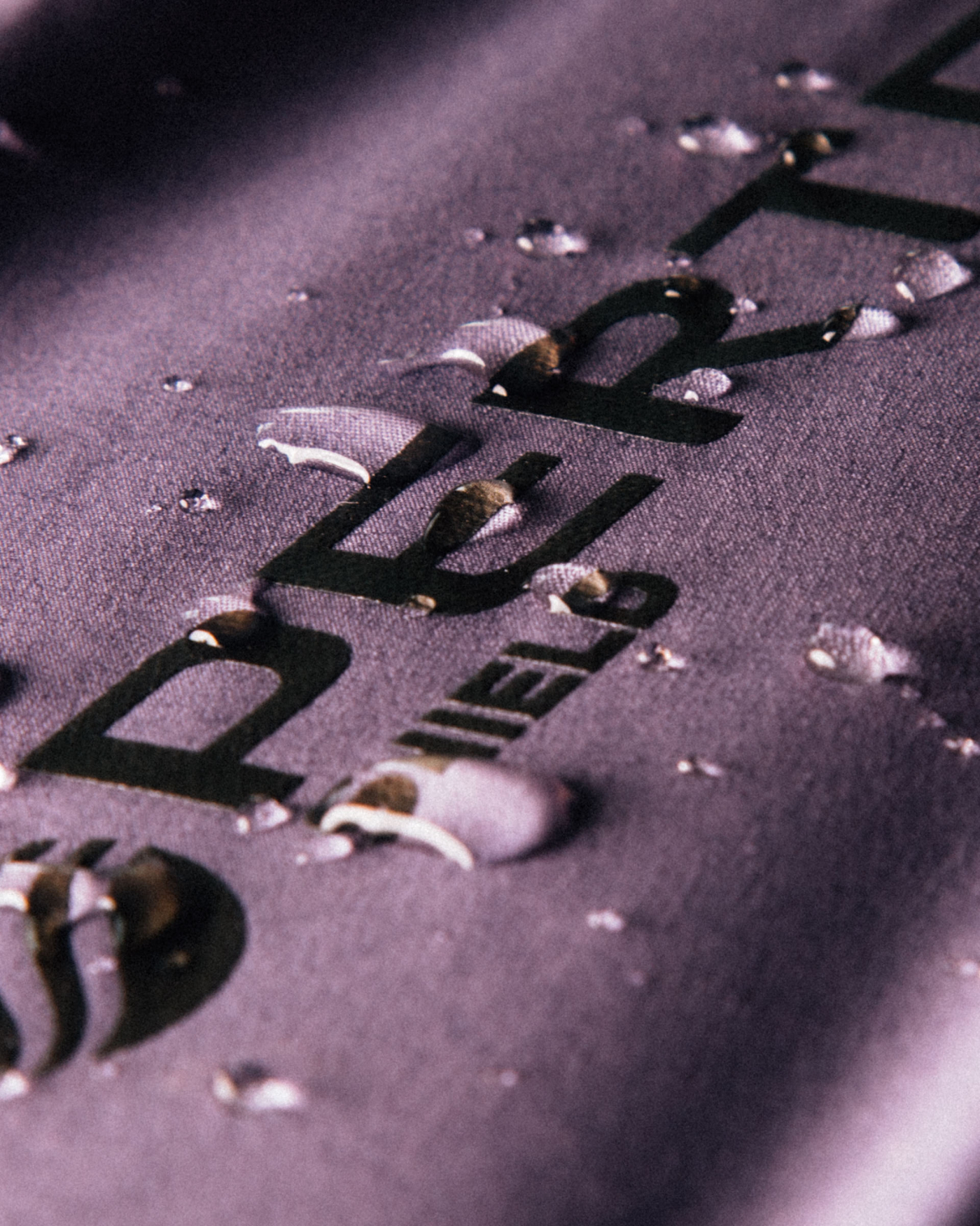
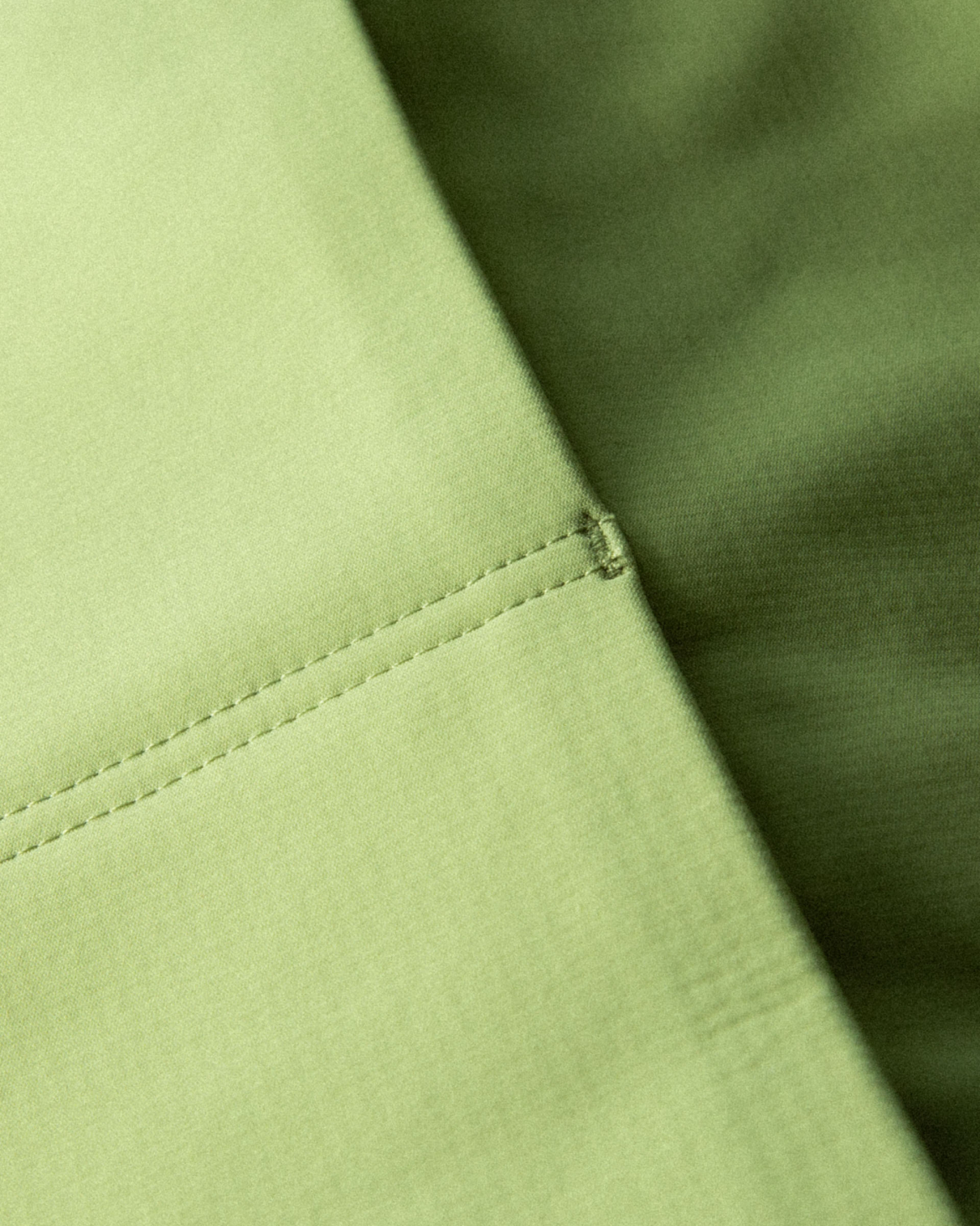
Effective dissipation of internal moisture
The Signature Deep Winter softshell jacket is made of a three-layer membrane material with increased elasticity in four directions. “The softshell clothing combines the properties of both a top layer and a thermal insulation layer. Softshell is generally quite a bit heavier and thicker than hardshell. A softshell jacket is therefore good for someone who will wear it in foggy, drizzly and cold weather and doesn’t need as much breathability,” Marcela describes, explaining the difference between softshell and hardshell jackets. The outer layer of polyamide fibers gives the fabric a higher abrasion resistance. The inner layer of polyester with a 3D grid structure increases air circulation and maintains high breathability even with exceptional insulating properties. Quickdry Frame® moisture control technology distributes moisture from one exposed spot across the entire surface of the material thanks to its grid structure, so it dries faster and prevents getting soaked.
Maximum performance from recycled materials
Our lightest jersey now in a long sleeve version made entirely from recycled material. Three GRS-certified mesh materials are complete with an extra-wide elastic band at the bottom hem, along with a YKK® Natulon® zipper and zipper pullers that are also made from recycled materials. “Each of the three materials was carefully selected with an emphasis on its structure and elasticity. Where more elasticity is needed, we used a more flexible material. We used the mesh structure in places where higher breathability is suitable, for example in the armpit area,” Marcela explains about how the materials were selected. This piece, like the entire Alternative collection, has been designed and manufactured with respect for nature so that you don’t have to compromise between functionality and sustainability. “We are not eco-activists, but we try to do things the best we can to avoid making an unnecessary mess on our planet,” adds Martin Velits, CEO and Head of Product.
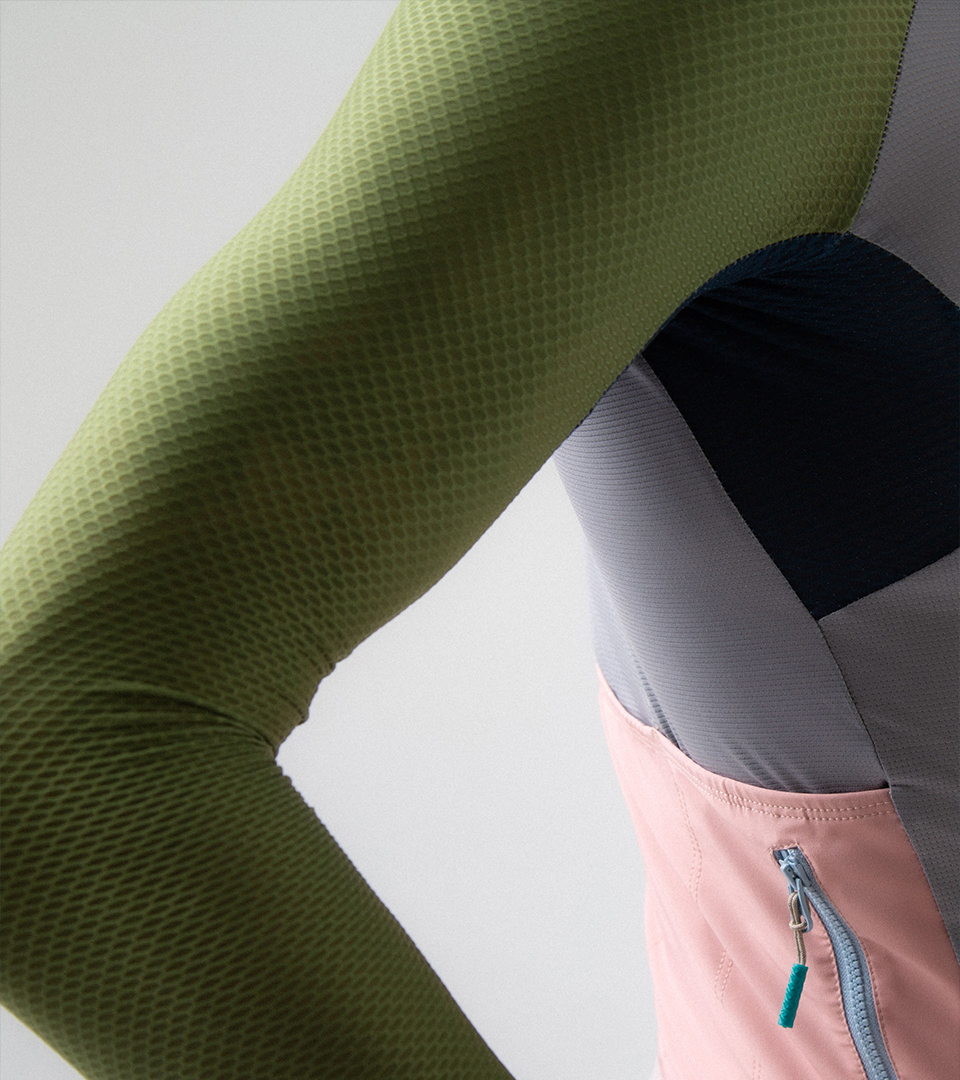
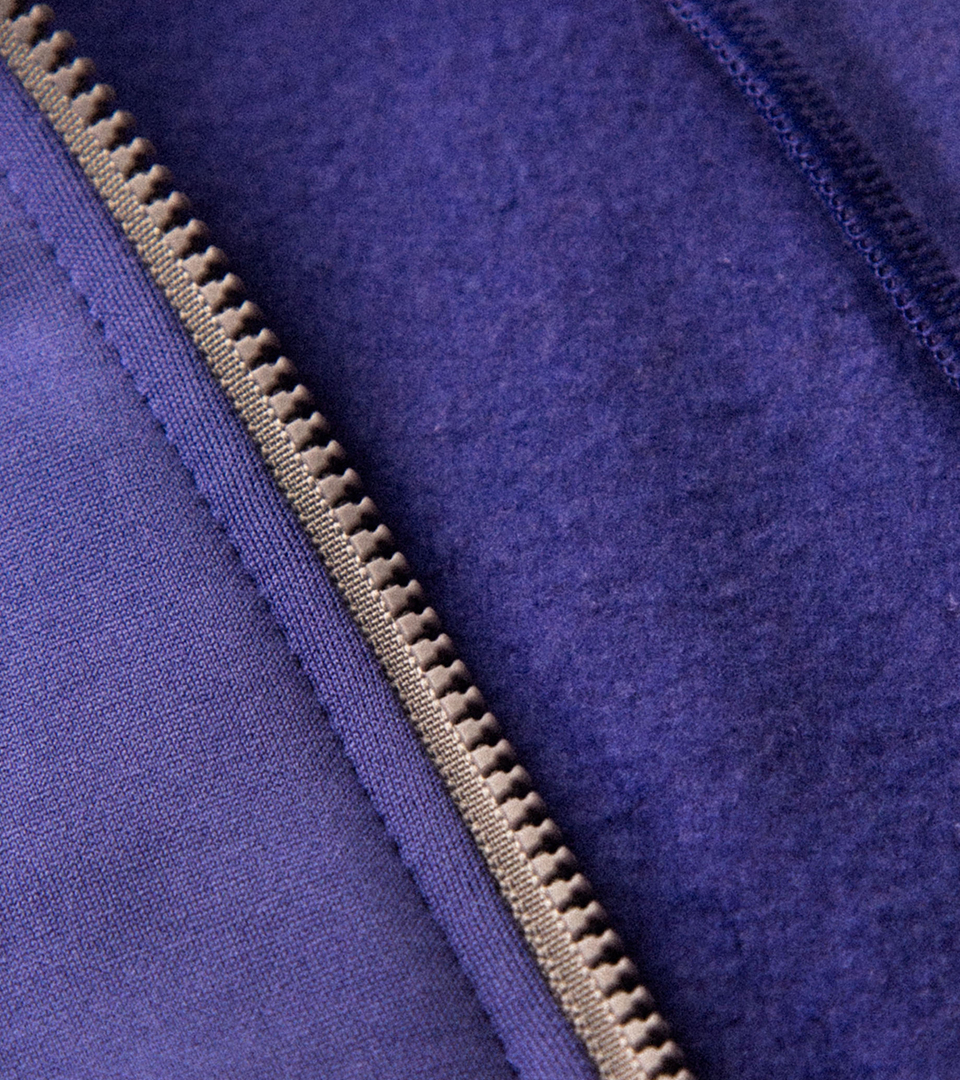
From wood to fiber
Alternative Eco-Fleece is the warmest jersey in the collection, made from soft recycled technical fleece with effective thermoregulating properties. “Fleece is the material we use for what is called the second or insulating layer. Our fleece is characterized by a high proportion of elastane, so it is very elastic. It’s not brushed on the outside, so it works great even when we put another piece of clothing on top of the fleece layer. The brushing on the inside is pleasant to the touch and provides thermal insulation,” describes Marcela. The inner brushed side of the knitted fabric is made of Tencel™ fibers, which are of plant origin. These are extracted from the raw material of eucalyptus wood. The production process of this fiber is environmentally friendly, and through its use and repeated washings there are no microplastics released into the wastewater. The company uses a closed-cycle principle in the processing and production of these fibers, in which all solvents and water used are recycled and reused. This minimizes waste, and as a result, water consumption is up to twenty times lower than with cotton.
Combining effective insulation and breathability
Lightweight jackets and vests made from recycled materials designed for cool rides in high temps without rain. The front, shoulders and top of the jacket sleeves are made of functional Pertex® Quantum Air material, with a Polartec® Alpha® Direct insulation layer underneath. “The first-mentioned material is exceptionally tightly woven and its structure provides protection from the wind. At the same time, it ensures sufficient breathability. That’s why we chose to combine it with Polartec Alpha, as this insulation layer is also exceptionally breathable,” Marcela explains about how the materials were selected. Pertex® Quantum Air allows air to flow through the fabric, providing a balance between air resistance and breathability. Polartec® Alpha® Direct is one of the leaders in the development of functional clothing. It is incredibly lightweight and has unrivaled thermal insulation properties despite its low weight. Furthermore, the fabric system prevents excessive sweating by evenly distributing moisture to other parts of the material, where it then evaporates and dries quickly.
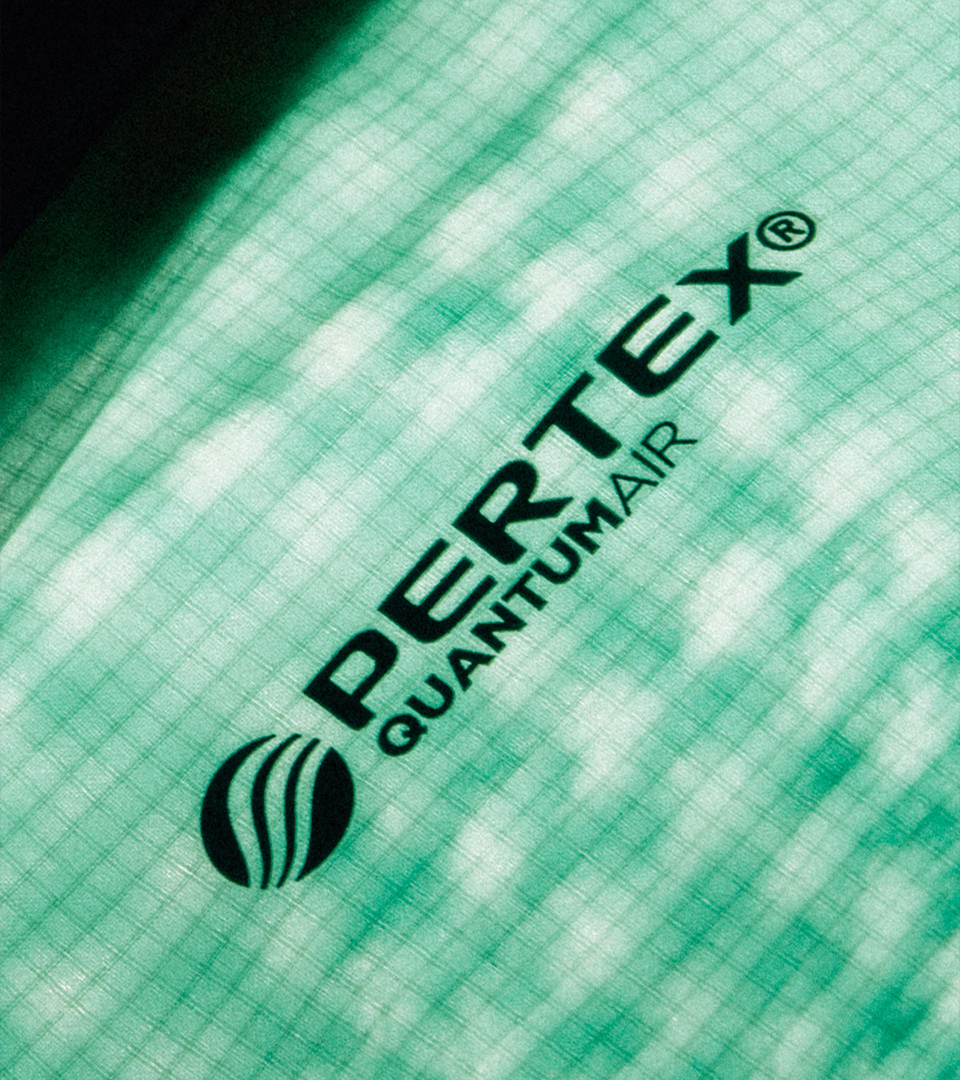
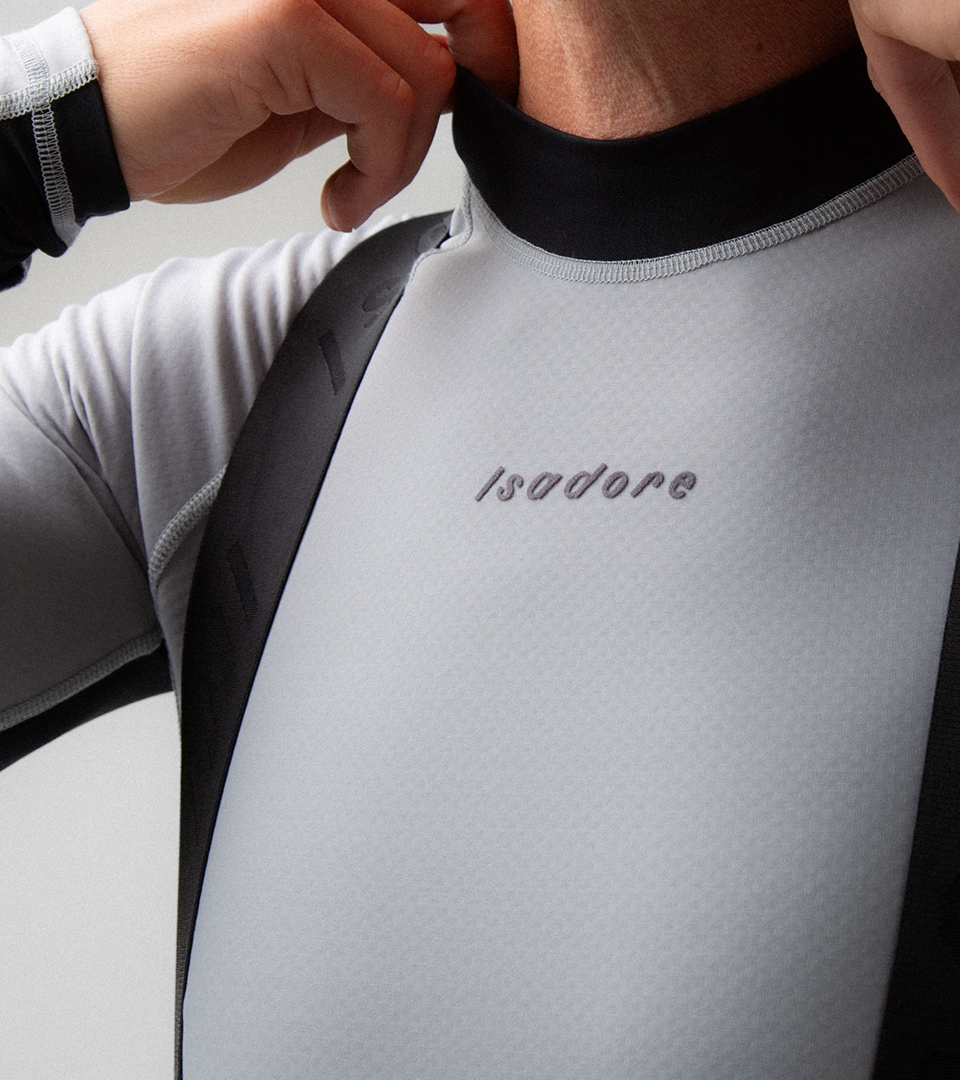
Revolutionary fusion of two functional layers
The winter base layer, which replaces the jersey under the jacket, was created by combining the first and second layers. “Built for riders who like to wear a softshell jacket with the same pockets as a jersey and who prefer a thicker base layer under their jacket instead of a jersey.” Brushed interior is pleasant to the touch and forms an effective thermal insulation. The material offers more insulation in exposed zones, where it traps more air in its mesh structure to better insulate and keep the rider warm. The lightweight brushed knit in the underarm and back area dries quickly and is extremely breathable. “We were able to use material that was left over from another production, so the sustainability aspect of the product is also important,” adds Marcela.
Gloves with innovative insulating layer
Winter gloves for temperatures of around zero degrees with Polartec® Alpha® Direct protective layer. It is an insulating layer originally developed for US Army Special Forces that offers consistent thermal comfort and high breathability at very low weight and thickness. “This feature is especially important in gloves, as users retain sensitivity in their fingers and high mobility even in freezing conditions,” Marcela concludes. The material dries quickly and – compared to down – it requires low maintenance. It will keep you dry and warm without the bulk of traditional insulating fabrics.
